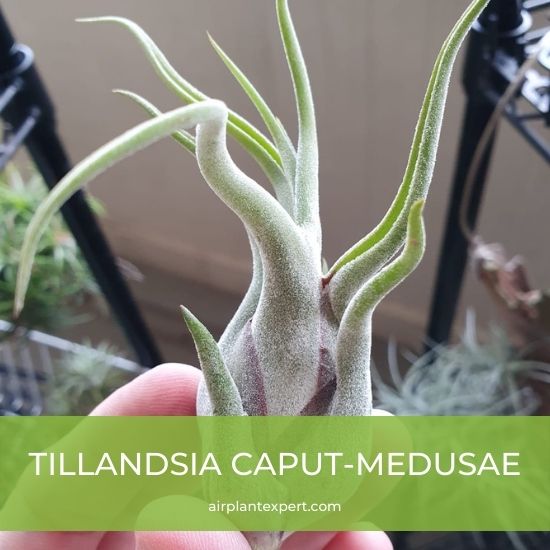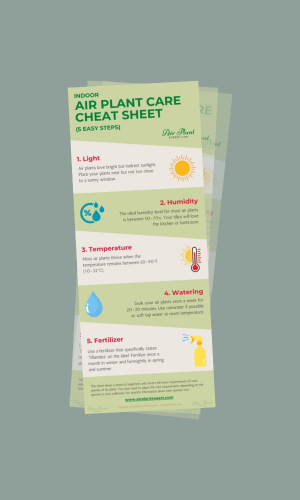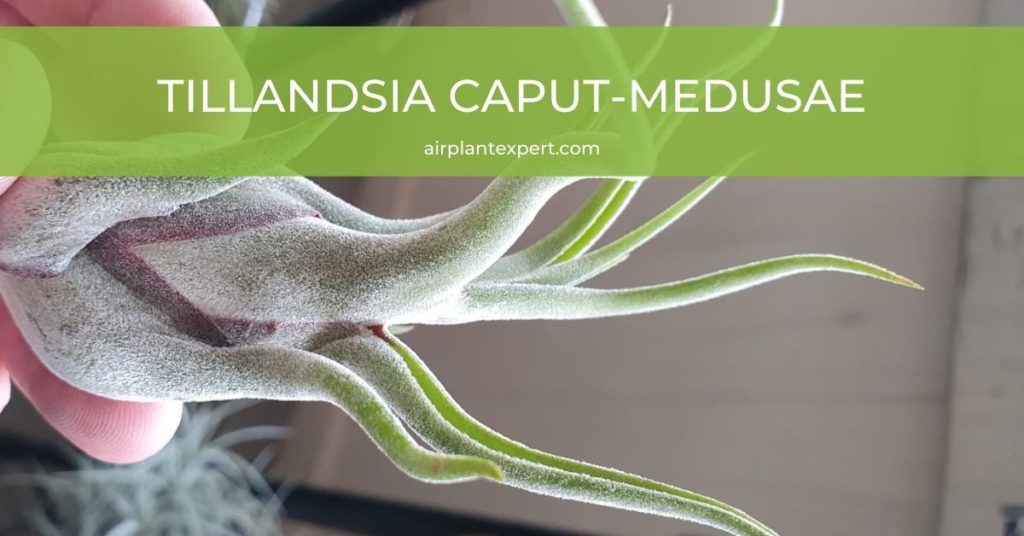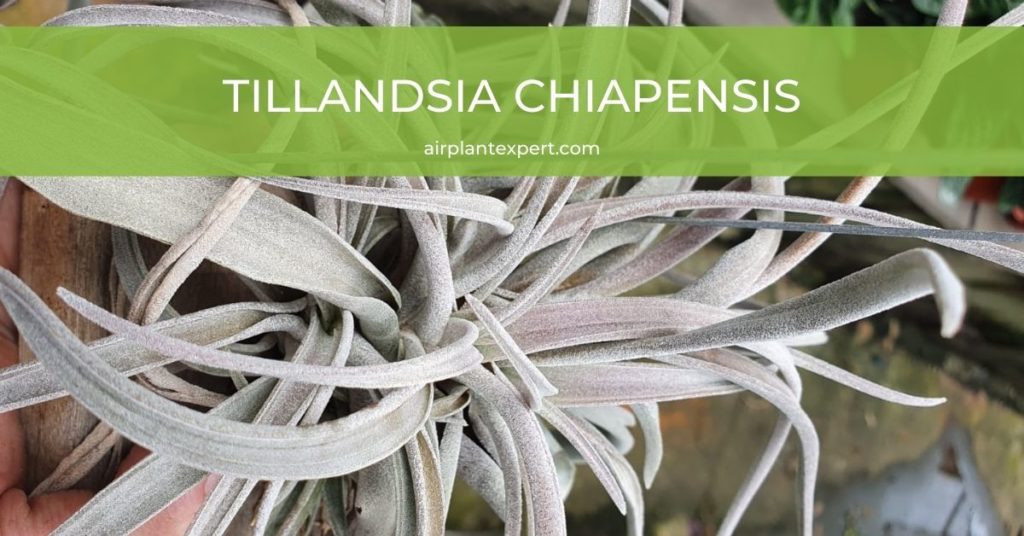Tillandsia Caput-medusae is a versatile air plant with curved and twisting silvery-green leaves. The distinctive appearance resembles the snake-like hair of the Greek legend Medusa. Hence, this air plant is often called Medusa’s head, or the Octopus plant.
Quick Guide
How to Care for Tillandsia Caput-medusae
Tillandsia Caput-medusae is easy to care for and grows well indoors. This hardy species can tolerate low watering levels. However, that will stunt the plant’s growth.
I recommend placing your plant next to a window that receives plenty of indirect bright sunlight and a weekly soaking schedule. Essentially you are trying to mimic the plant’s natural dappled light environment.
Caput-medusae is a good choice if you live in colder regions as this aerial plant can withstand lower temperatures. However, remember that it prefers warmer temperatures, and the snaky leaves must be protected from frost.
The lower edges of mature leaves (around the sheath area) often turn a subtle beetroot color which should not be confused with browning leaf tips and underwatering, it’s perfectly normal for this species.
Medusa’s head is a captivating species and looks fantastic in any display. I like to mount Medusa on wooden items such as large branches or corkwood displays. Given the right care, its roots will grow quickly and attach to the mounting medium.
How to Water Tillandsia Caput-medusae
Due to Tillandsia Caput-medusae’s bulbous nature, it can be prone to rotting if water collects in between the leaves. Therefore, I always maintain a good airflow around this plant, particularly after watering.
I recommend soaking your Medusa once a week for about 20-30 minutes. In addition, during hot summers, supplemental misting (2-3 times per week) of the plant’s leaf tips will help to prevent them from drying out and going brown.
Misting in between soakings can provide additional humidity, but should not replace the weekly soaking routine. Misting is beneficial if the air in your environment is dry. During the cold seasons, you can reduce the frequency of misting or stop altogether.
Rainwater is best for watering but you can use soft tap water, pond, or even spring water. Several of my friends use aquarium water which works well and contains many nutrients.
Turn your plant upside down after soaking and give it a gentle shake to remove any lingering moisture. This helps prevent water from accumulating in between the plant’s leaves, which can cause rot.

How to Propagate Tillandsia Caput-medusae
You can of course propagate Tillandsia Caput-medusae by seed, however, propagation typically involves the separation of naturally occurring offspring, known as pups or offsets.
After the parent plant flowers, watch for the appearance of pups near the base of the plant. These miniature clones should remain attached to the mother plant until they reach about one-third its size. At this time you can either remove the pups or leave them to form a naturally occurring clump.
Once the pups are large enough you can carefully remove them by gently pulling them away from the base of the mother plant. Ensure you do not damage the base or leaves of either plant.
Let the pups stand for a day or two and then mist them thoroughly every few days. It may take several weeks for the pups to establish and start growing. Monitor light and moisture levels throughout this period.

Get Your FREE Air Plant Care Cheat Sheet
5 easy steps to keep your air plants happy and healthy.
Flowers and Expert Tips
When flowering, Tillandsia Caput-medusae is a spectacle you don’t want to miss. The inflorescence comprises two to six erect spikes and the floral bracts are usually an attractive blood-red color though sometimes they can appear red and green.
The tubular-like flowers are a mauve or violet color similar to the Ionantha varieties. Bright, indirect light is crucial to encourage this species to bloom. Place it near a window with filtered light; direct sunlight can be too intense.
Of note, early morning or late afternoon sun can encourage blooming without the risk of burning your plants.
Also, you can encourage flowering by increasing the frequency of fertilizer from once a month to every two weeks. Be careful though to avoid nutrient overload/burn.
Remember, while nutrients are vital, less is often more with air plants. Over-fertilizing can harm the plant’s delicate structure and impede flowering.
The Octopus plant varies in size in nature and can grow as large as 35 cm in width and height but this is not the norm and unlikely if your plant is grown indoors.
Tillandsia Caput-medusae Hybrids
Tillandsia Caput-medusae exhibits a variety of forms that can differ slightly in color, size, and shape. However, this species is known for its distinctive, snake-like foliage which invokes its mythical namesake, Medusa.
Here are some commonly found hybrids:
- Tillandsia ‘Robust’
- Tillandsia ‘Sonoran Snow’ (by Mark Dimmitt)
- Tillandsia ‘Queen’s Prize’
- Tillandsia Caput-medusae x Concolor
- Tillandsia Caput-medusae x Streptophylla
- Tillandsia Caput-medusae x Brachycaulos
- Tillandsia Ionantha x Caput-medusae.
Tillandsia ‘Robust’ was first found in Mexico and is thought to be a geographically isolated population. As the name may suggest it can grow quite large, and has blooms that can reach 16-25″.
Depending on the Caput-medusae hybrid you encounter some may present with different leaf textures and patterns. However, most maintain the signature tentacle-like leaves to some extent.





